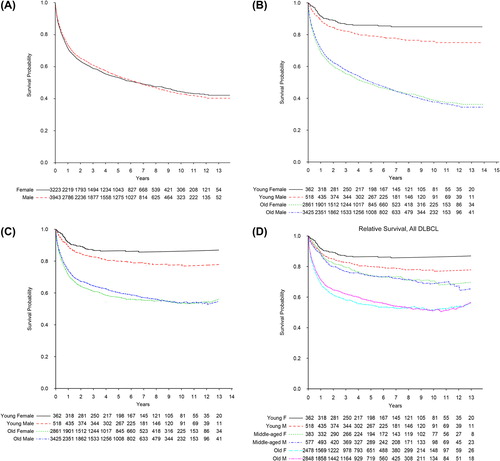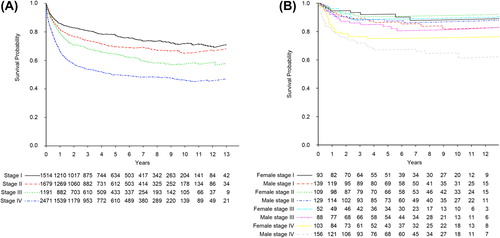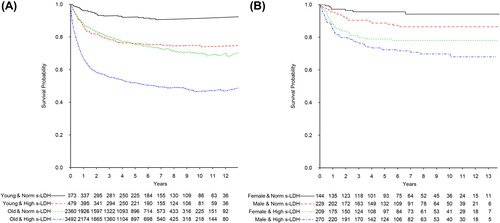Figures & data
Figure 1. Survival of DLBCL diagnosed in Sweden 2000–2013. (A) Observed overall survival for all men and women (log rank test p = 0.6). (B) Observed overall survival for young and old men and women (log rank test for young persons p = 0.007 and for old persons p = 0.4). Cut-off for young versus old is 51–52 years (mean age for menopause for women in Sweden). (C) Relative survival for young and old men and women. (D) Relative survival for patients younger than 52 years, middle aged patients aged 52–60 years, and patients older than 60 years.

Table I. Clinical characteristics of DLBCL in Sweden 2000–2013.
Table II. Relative risk ratio (RR) of DLBCL mortality in Sweden 2000–2013.
Figure 2. Relative survival of DLBCL in Sweden diagnosed 2000–2013 according to Ann Arbor stage. (A) All patients grouped according to Ann Arbor stage. (B) Patients younger than 52 years (mean age for menopause for women in Sweden) according to gender and Ann Arbor stage.

Figure 3. (A) Relative survival of all DLBCL patients, and (B) observed overall survival of DLBCL patients younger than 52 years, diagnosed in Sweden 2000–2013. (A) Patients grouped according to normal (Norm) or high serum lactate dehydrogenase (S-LDH) and age. Cut-off for young versus old is 51–52 years (mean age for menopause for women in Sweden). (B) Patients younger than 52 years grouped according to normal (Norm) or high serum lactate dehydrogenase (S-LDH) and gender. Women with normal S-LDH had a significantly longer overall survival compared to the men (log rank test p = 0.03) whereas no difference was found for patients with elevated S-LDH (log rank test p = 0.09).

